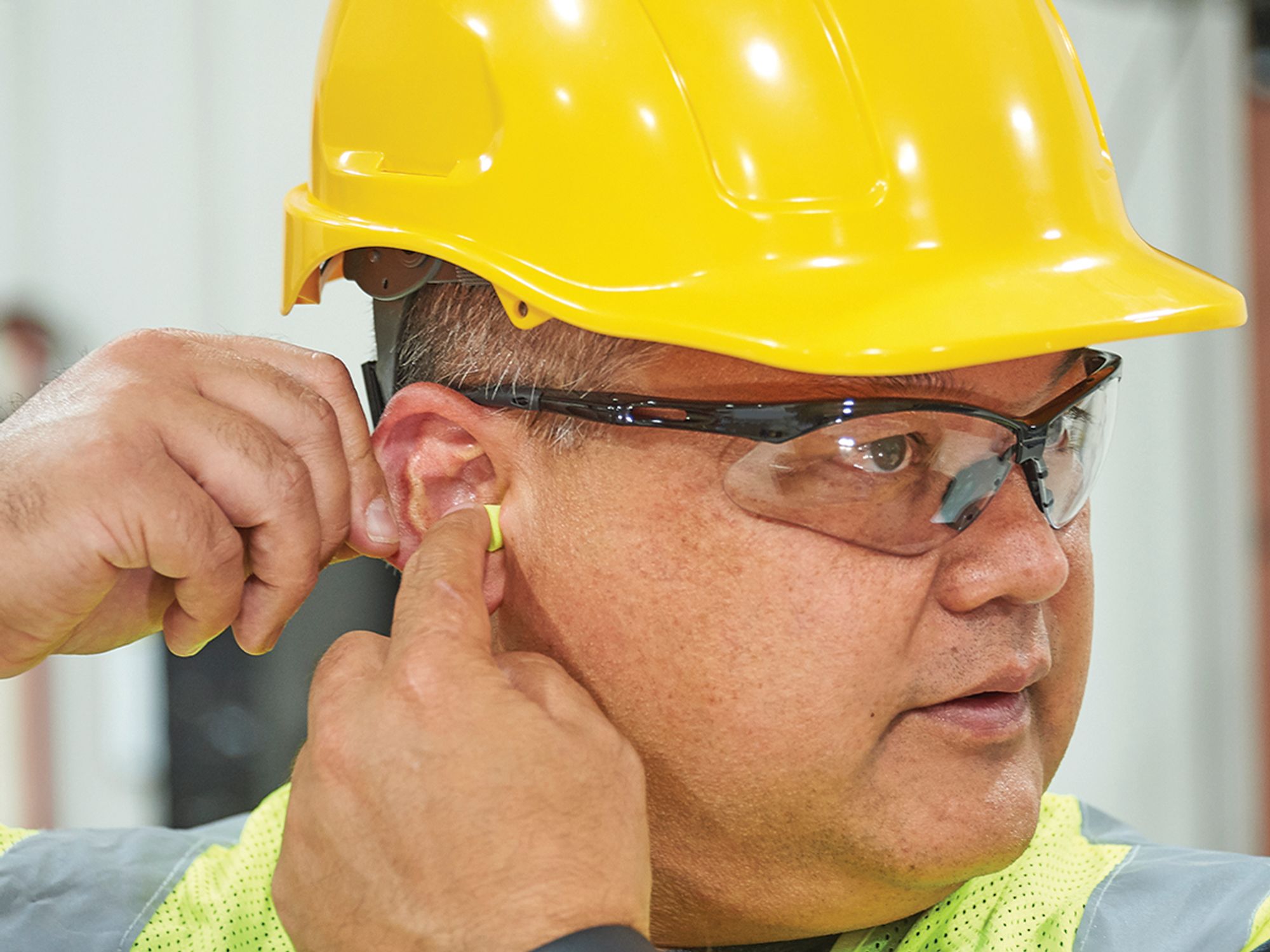What is the basic requirement for recording hearing loss cases?

- Employers must provide hearing protectors to all employees who are exposed to excessive noise in the workplace.
- If a hearing loss incident occurs, it must be recorded in the employer’s OSHA 300 Log.
Under the Occupational Safety and Health Administration’s (OSHA) hearing conservation program, employers must develop a program for all workers exposed to eight-hour time-weighted average (TWA) noise levels of 85 dB or above.
What is a standard threshold shift (STS)?
A standard threshold shift (STS) is a change in hearing threshold, relative to an employee’s baseline audiogram (hearing test), averaging 10 decibels (dB) or more at 2000, 3000, and 4000 hertz (Hz) in one or both ears. If an employee’s audiogram reveals that a work-related STS has occurred in one or both ears, and the total hearing level is 25 decibels or more above audiometric zero in the same ears as the STS, the case is recordable.
Employers must record these cases by checking the “hearing loss” column on the OSHA 300 Log.
Can the current audiogram be adjusted to reflect the effects of aging on hearing?
Employers may take into account the hearing loss that occurs as a result of the aging process and retest an employee who has a standard threshold shift (STS) on an audiogram to ensure that the STS is permanent before recording it. Retesting allows employers to exclude false positive results and temporary threshold shifts from the data. If the employee’s hearing is tested within 30 days of the first test, and the retest does not confirm the STS, the employer is not required to record the hearing loss case on the OSHA 300 Log. However, if the retest confirms the STS, the hearing loss illness should be recorded within seven calendar days of the retest. Employers may not use an age adjustment when determining whether the employee’s total hearing level is 25 dB or more above audiometric zero.
When comparing audiogram results, an employer should adjust the results for the employee’s age when the audiogram was taken using Tables F-1 or F-2, as appropriate, in Appendix F of the Occupational Noise Exposure standard at 1910.95.
Hearing loss is presumed to be work related if the employee is exposed to noise in the workplace at an eight-hour time-weighted average of 85 dBA or greater, or to a total noise dose of 50 percent, as defined in OSHA’s Occupational Noise Exposure standard. Noise dose is defined as the amount of actual employee exposure to noise relative to the permissible exposure limit for noise. A dose greater than 100 percent represents exposure above the limit. For hearing loss cases where the employee is not exposed to this level of noise, employers should refer to the rules in 1904.5 to determine if the hearing loss is work related.
If a physician or healthcare professional determines that the hearing loss is not work related or has not been significantly aggravated by occupational noise exposure, it is not required to consider the case work related or to record the case on the OSHA 300 Log. Examples include hearing loss that occurs before the employee was hired or those unrelated to workplace noise, such as off-the-job traumatic injury to the ear or infections.
Do employers have to record a hearing loss case if they plan to retest the employee’s hearing?
If the employee’s hearing is retested within 30 days of the first test, and the retest does not confirm the recordable standard threshold shift (STS), the employer is not required to record the hearing loss case on the OSHA 300 Log. If the retest confirms the recordable STS, the hearing loss illness should be recorded within seven calendar days of the retest. If subsequent audiometric testing performed under the testing requirements of the 1910.95 noise standard indicates that an STS is not persistent, it is permitted to erase or line-out the recorded entry.
Are there special rules to determine if a hearing loss case is work related?
Employers should use the rules in 1904.5 to determine if the hearing loss is work related. If an event or exposure in the work environment either caused or contributed to the hearing loss, or significantly aggravated a pre-existing hearing loss, the case is considered to be work related.
